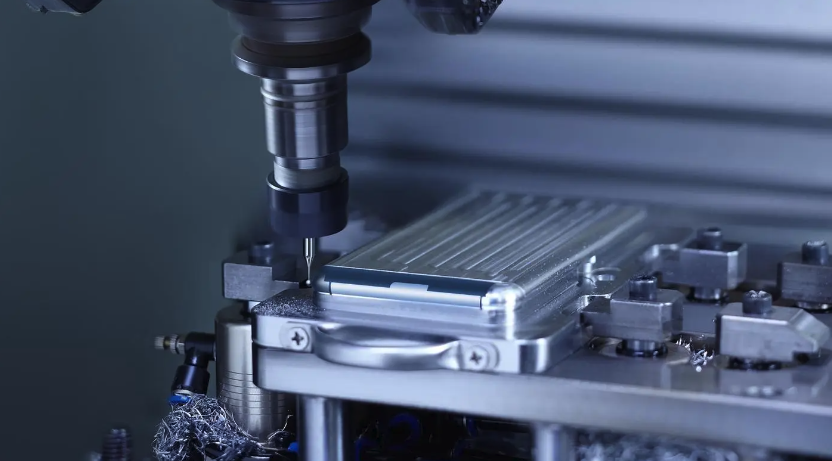1. Unsafe factors in the machining process
During the machining of magnesium alloys, the chips and fine powders generated pose a risk of combustion or explosion. The size of the chips produced in the initial processing stage is relatively large. Due to the high thermal conductivity of magnesium, the frictional heat generated can be quickly dissipated, so it is difficult to reach the ignition temperature. There are few accidents at this stage. However, in the finishing stage, since the fine chips and fine powder produced have a large specific surface area, it is easy to reach the ignition temperature and cause combustion or explosion accidents.

During the processing of magnesium alloys, the factors affecting the temperature of chips to reach the flash point or combustion are as follows.
a. The relationship between processing speed and cutting rate. Under any given set of conditions, there is a range of machining speeds and feed rates that can cause burning. The higher the feed rate, the thicker the chip, making it less likely to reach the ignition temperature. As long as the processing speed is low enough, it is impossible for chips of any size to be ignited. If the machining speed is high enough, it is impossible to heat chips of any size to ignition temperature due to the short contact time between chips and tools.
b. The relative temperature of the environment. The higher the relative temperature, the greater the possibility of misfire.
c. The composition and state of the alloy. Single-phase alloys are less prone to misfire than multi-phase alloys. The more homogeneous the alloy state, the possibility of misfire
smaller.
d. Other factors. The feed rate or the amount of tool engagement is too small; the pause time during the machining process is too long; the clearance angle and chip space of the tool are too small; a high cutting speed is used without the use of cutting fluid; the tool and nesting Possible sparks when dissimilar metal core linings collide in castings; accumulation of magnesium swarf around or under machine tools, etc.

2. Safety operation rules for mechanical processing
a. Cutting tools should be kept sharp, and a larger relief angle and clearance angle should be ground; blunt, chipped or cracked tools are not allowed.
b. Under normal circumstances, try to use a large feed rate for processing, and avoid using a small feed rate to produce chips of greater thickness.
c. Do not let the tool stop on the workpiece halfway.
d. When using a small amount of cutting, use mineral oil coolant to reduce cooling.
e. If there is a steel core lining in the magnesium alloy parts, it is necessary to avoid sparks caused by collision with the tool.
f. Keep the environment tidy and clean.
g. It is strictly forbidden to smoke, light fire and electric welding in the machining work area.
h. Sufficient fire extinguishing equipment should be stored in the working area.

3. Safety issues in grinding processing
Magnesium powder is flammable and can explode when suspended in air. All possible measures should be taken to ensure proper collection and disposal of magnesium grinding dust. When dry grinding magnesium alloy parts, magnesium dross must be removed from the work area immediately with a properly designed wet vacuum system. The connecting pipe between the vacuum cleaner and the grinder should be short and straight, the vacuum cleaner should be kept clean, and its air outlet should be set outside. The magnesium slag in the vacuum cleaner needs to be cleaned out in time to prevent its excessive accumulation. The sludge should be kept in water until it is disposed of. Keeping the working environment tidy at all times is essential to ensure the safety of grinding magnesium alloy parts. The connecting pipe between the grinding wheel and the vacuum cleaner must be checked and cleaned at least once a day, and the entire vacuum system should be cleaned thoroughly at least once a month. Do not allow chalk to collect on seats, windows, pipes and other horizontal surfaces. Too many vacuuming devices should not be connected to one centralized exhaust system. Central vacuum systems with long drying lines and ordinary vacuum systems with filters are not suitable for collecting magnesium powder. If magnesium alloy parts are to be wet ground on a belt grinder or disc grinder, sufficient cutting fluid should be used to collect all dust and transport it to a collection point.
Therefore, the following precautions must be taken when grinding magnesium alloy parts.
a. There must be a grinding machine specially used for processing magnesium alloy parts, and the label of “magnesium special” must be affixed. Before dressing the grinding wheel, the vacuum cleaner should be thoroughly cleaned.
b. When reworking and grinding the surface of magnesium alloy parts washed with chromate, it may cause sparks, so special care must be taken, and dust must not be allowed to gather nearby.
c. Grinding equipment operators should use smooth hats, smooth gloves and smooth flame-resistant clothing without pockets and cuffs. The aprons or protective clothing used should be clean and dust-free and easy to take off.
d. Warning signs should be placed in conspicuous places.
e. Sufficient fire extinguishing equipment should be stored in the working area.

4. Treatment of magnesium chips and fine powder
Dried cuttings should be placed in clean and airtight steel containers and stored out of contact with water. Wet cuttings and sludge should be stored in ventilated steel windows in remote locations with adequate ventilation to allow hydrogen gas to escape. Wet swarf and fine powders are particularly dangerous in tightly covered containers because hydrogen gas accumulations in high concentrations can be explosive. At present, the common treatment method of magnesium chips, magnesium powder and sludge is to dissolve with 5% ferric chloride solution (generally 0.6kg ferric chloride is used for 1kg of dry magnesium), which can convert most of the magnesium within a few hours into incombustible magnesium hydroxide and magnesium chloride residues. Since hydrogen gas will be produced in this reaction, it should be handled in an open container outdoors, and it is strictly forbidden to light a fire, smoke or weld around the reactor. The water in the sludge should be taken into account when preparing the 5% ferric chloride solution.
5. Fire extinguishing of burning magnesium chips
a. Class D fire extinguisher.
Its material usually uses sodium chloride-based powder or a passivated graphite-based powder, and its principle is to suffocate by excluding oxygen fire.
b. Covering agent or dry sand.
A small area of fire can be covered with it, and its principle is to suffocate the fire by excluding oxygen.
c. Cast iron chips.
It can also be used in the absence of other good fire extinguishing materials, and its main function is to reduce the temperature below the ignition point of magnesium, rather than smothering the fire. In conclusion, under no circumstances should a magnesium fire be extinguished with water or any other standard fire extinguisher. Water, other liquids, carbon dioxide, foam, etc. will all react with burning magnesium and strengthen the fire rather than suppress it.
